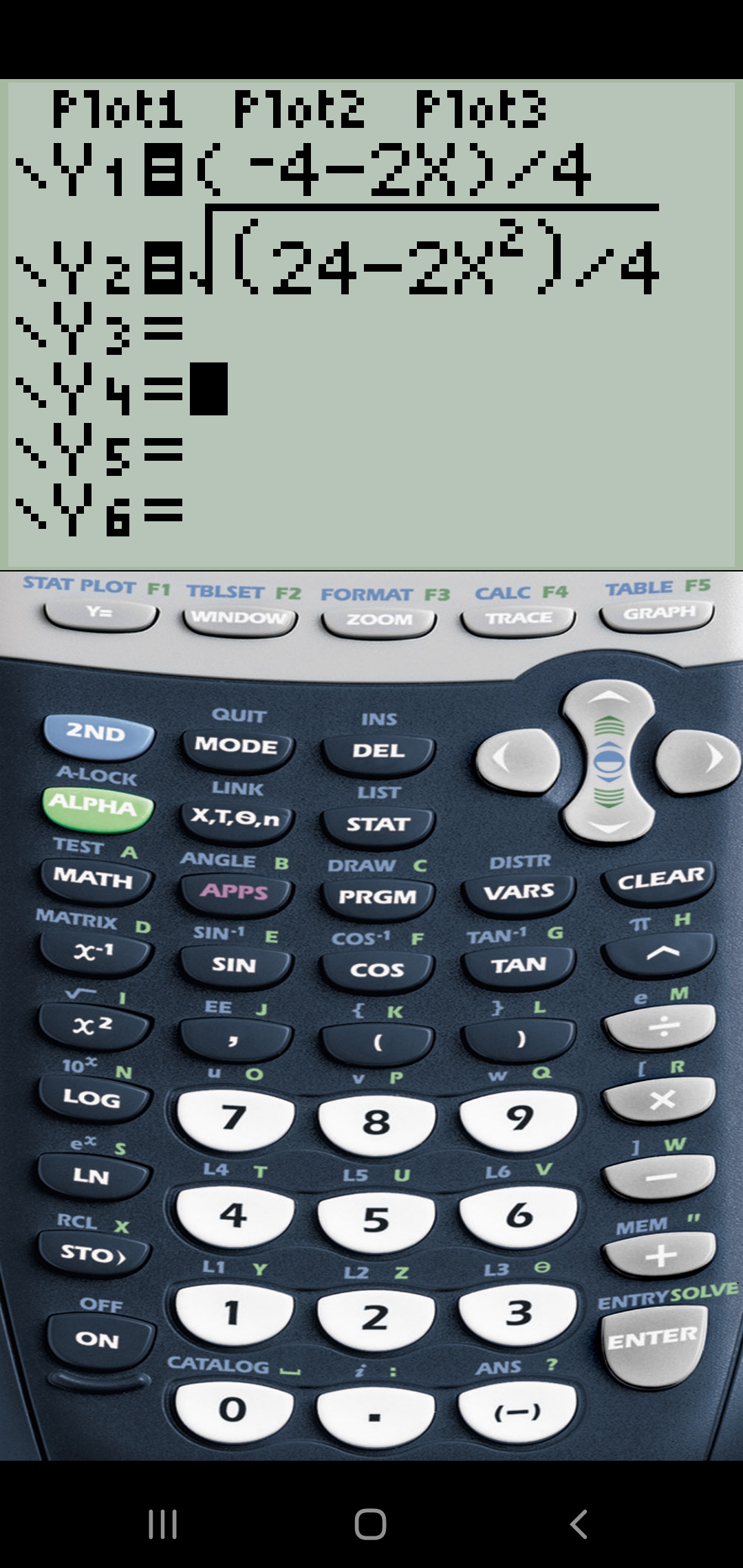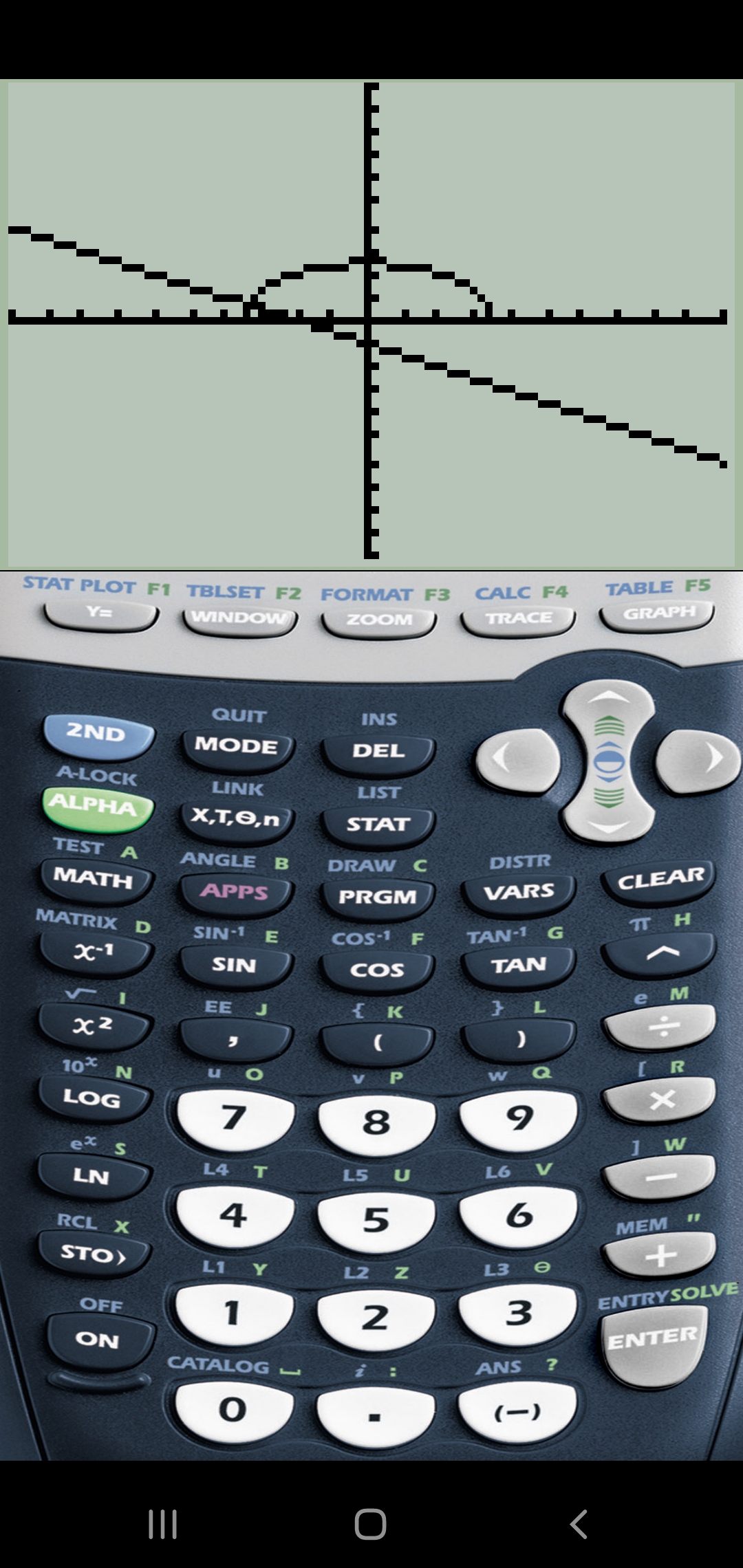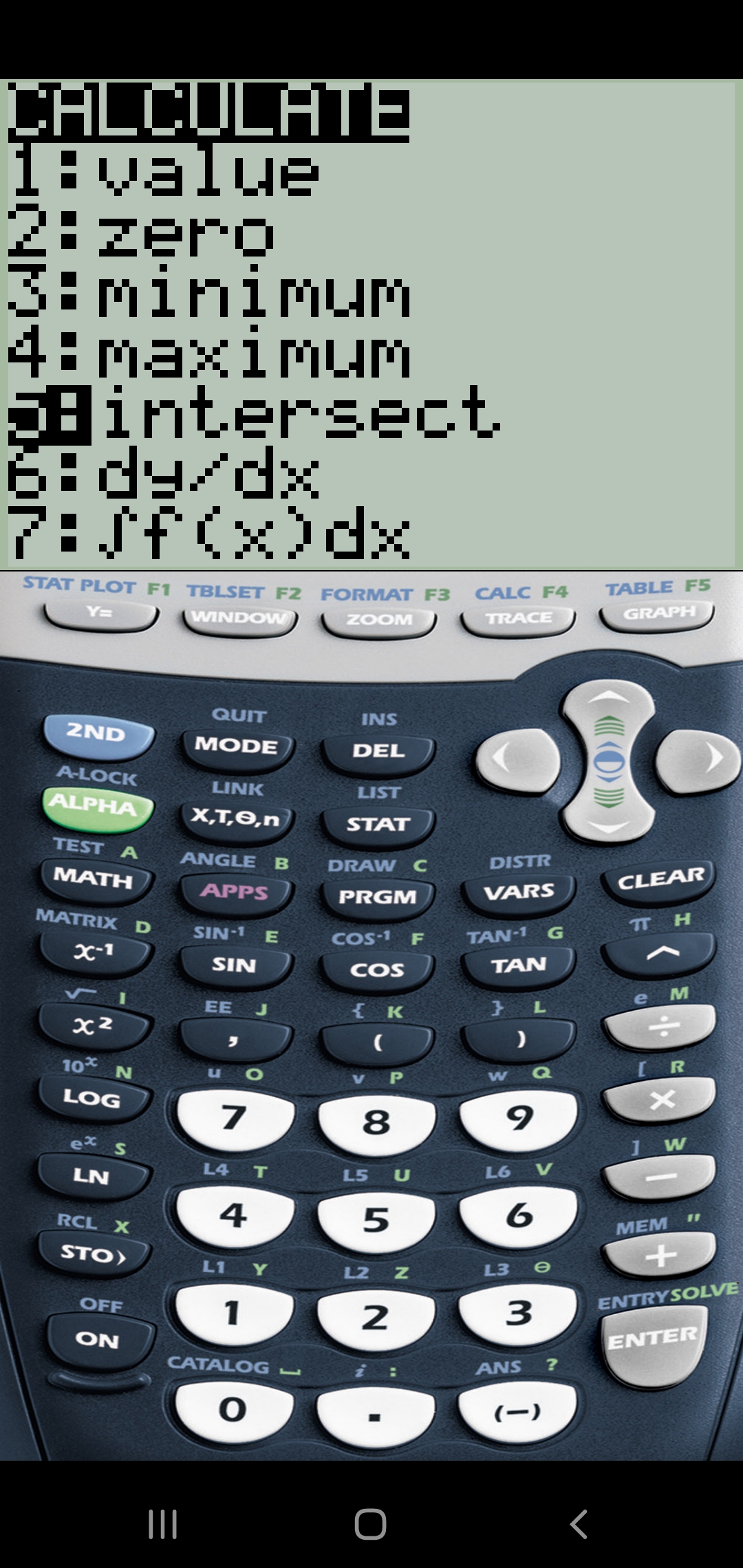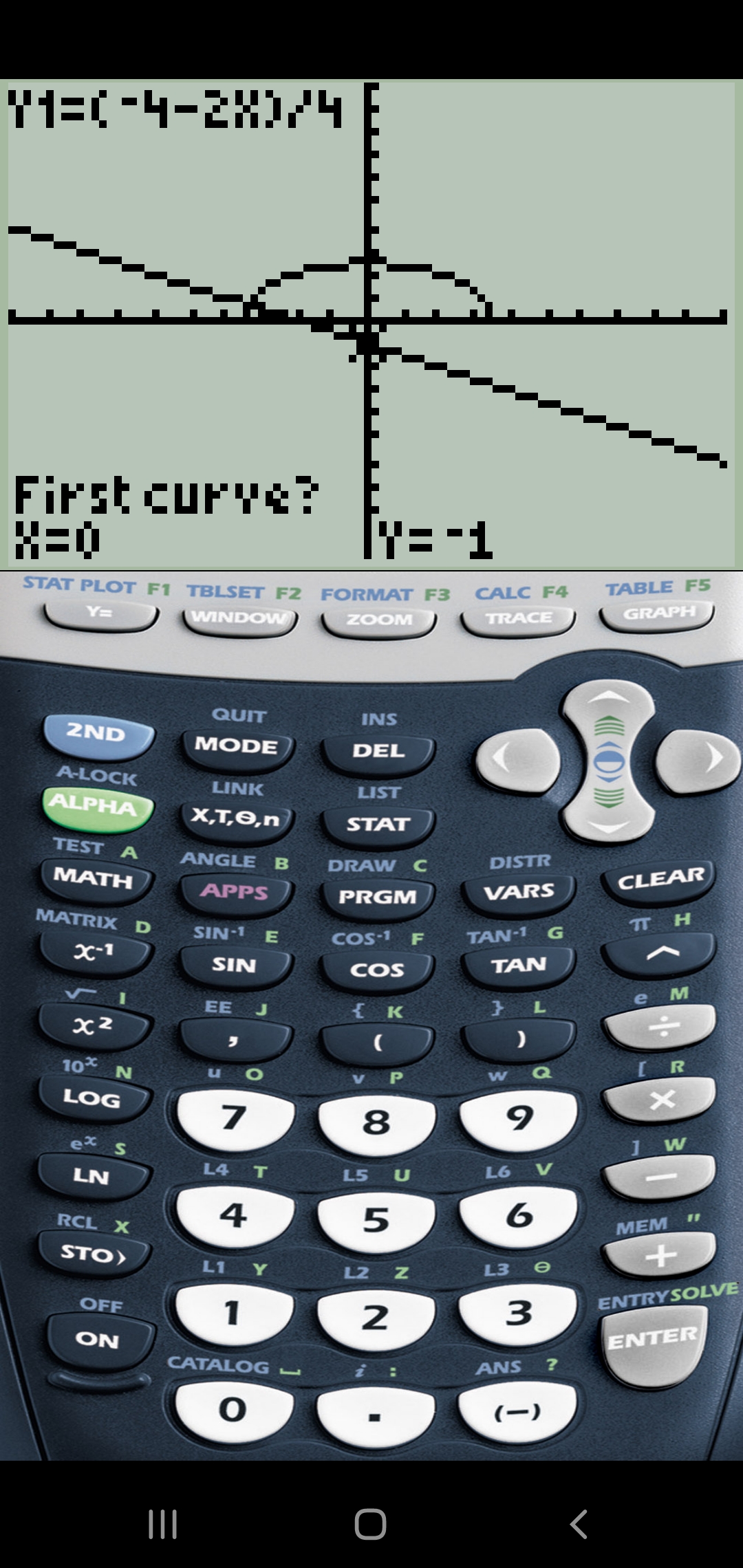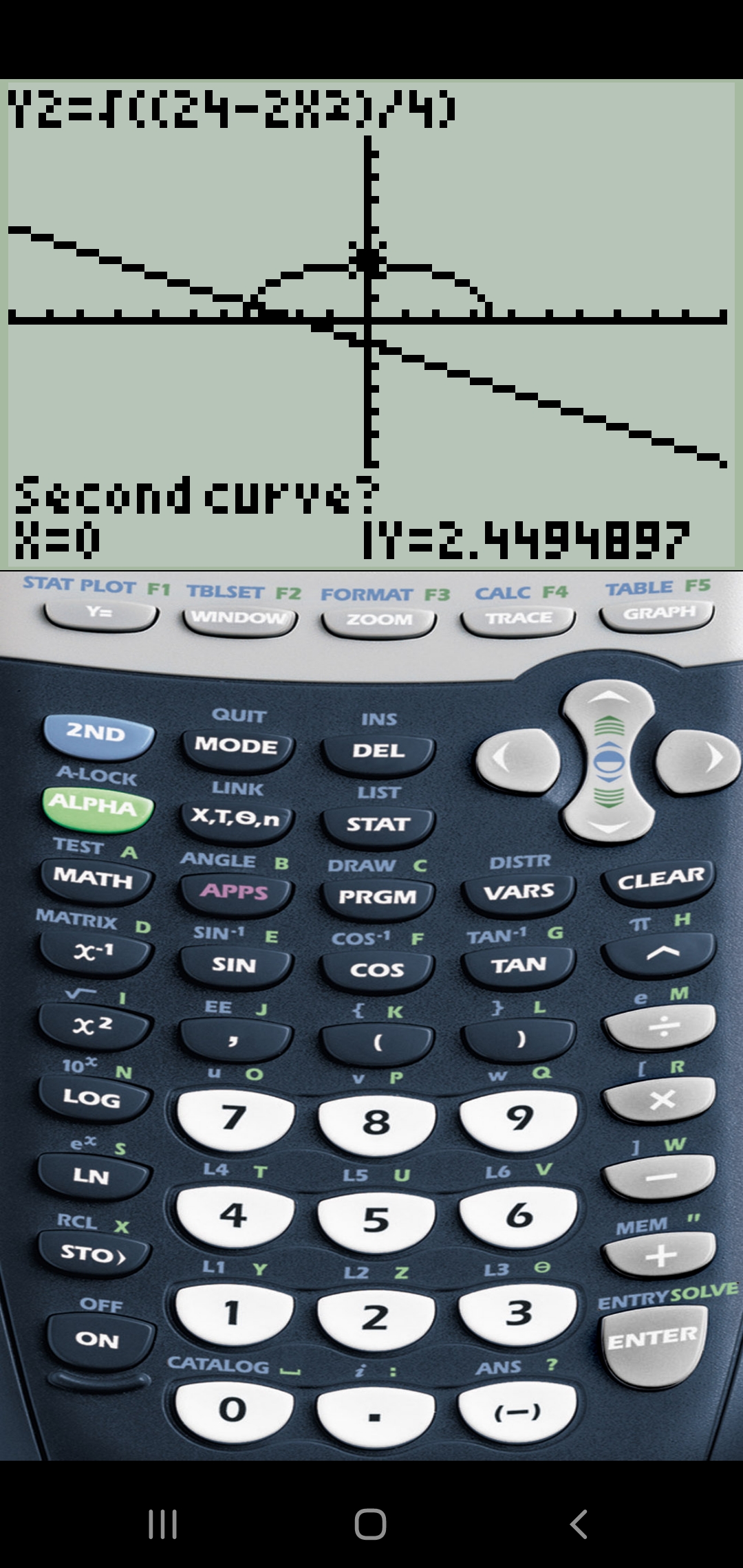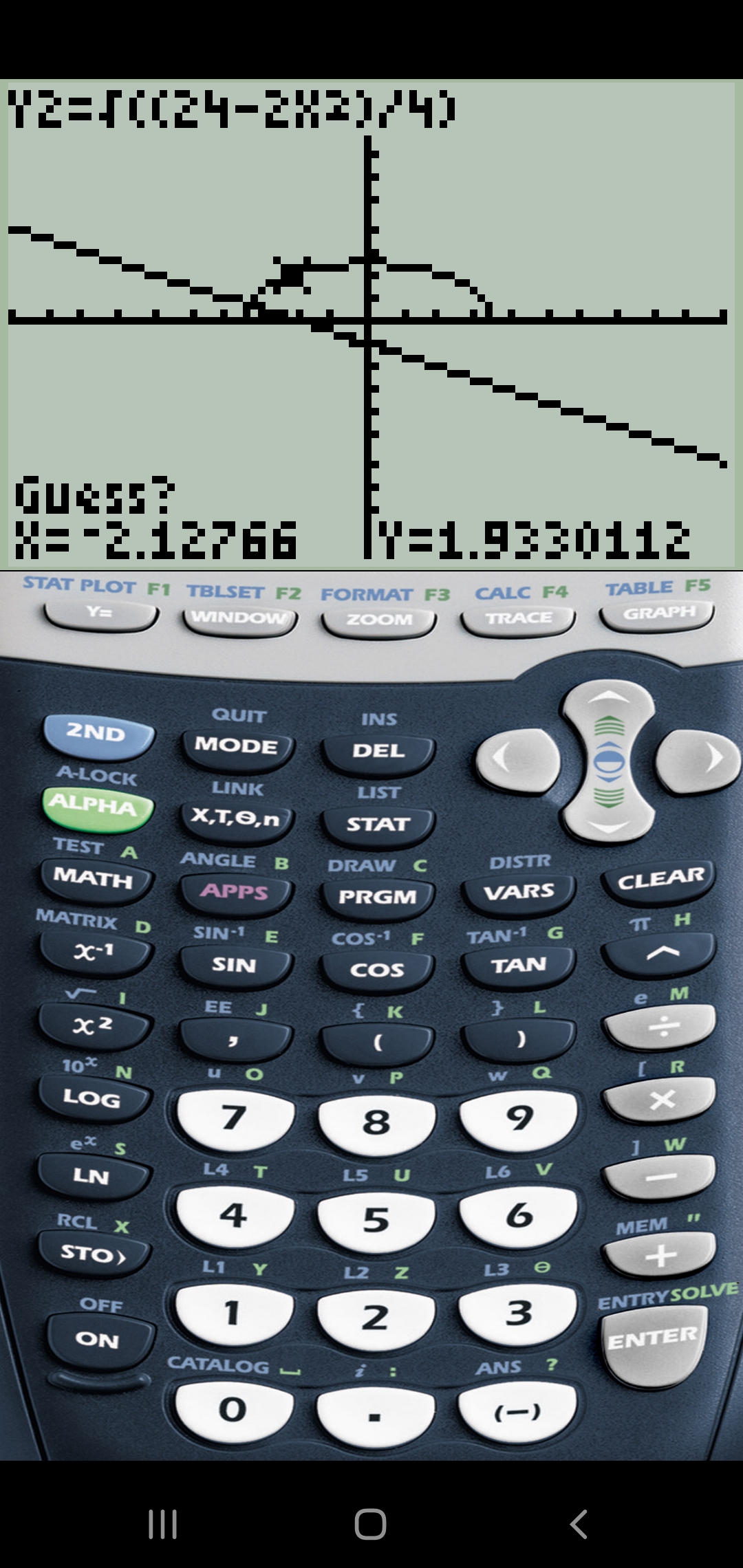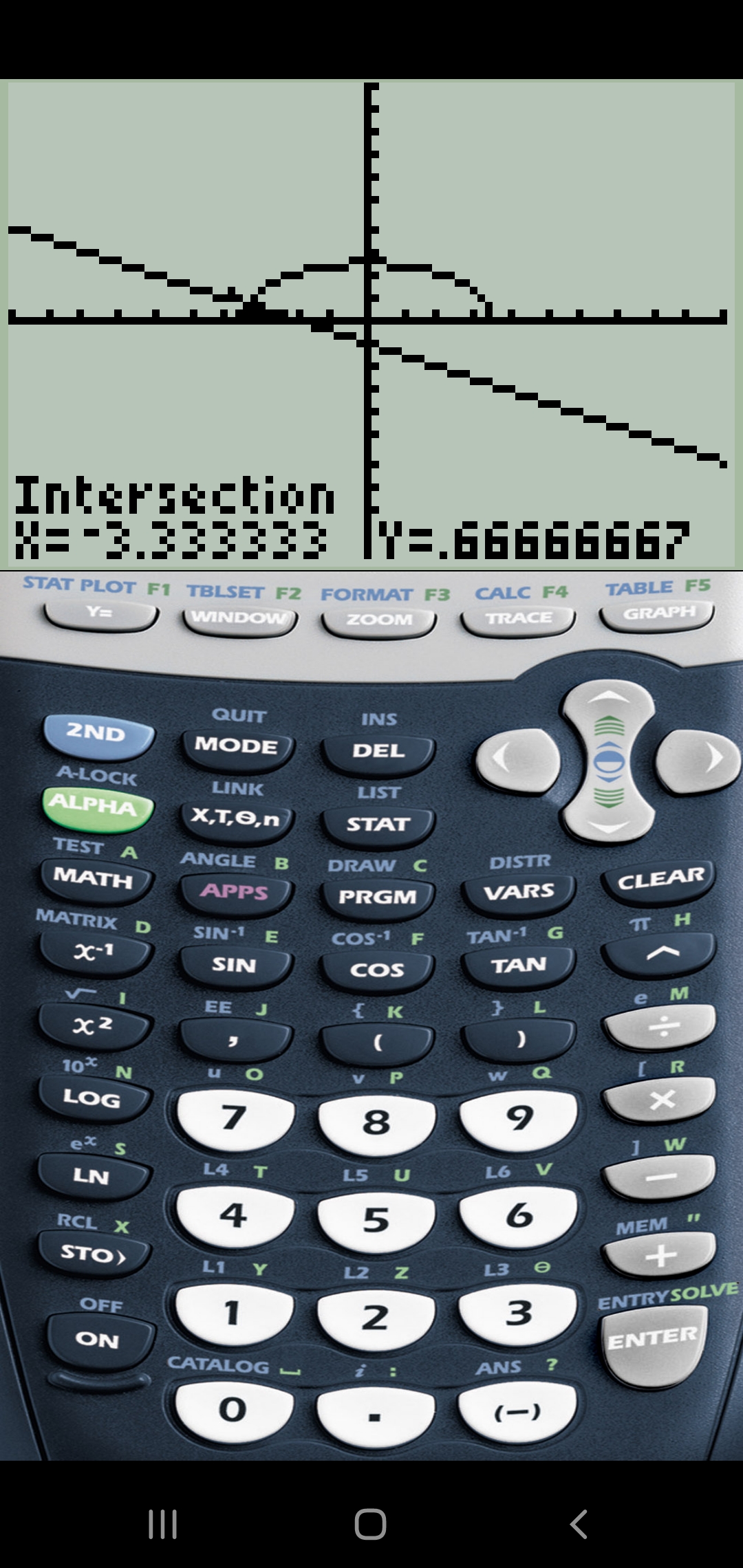There are many times in physics where you start with two equations and two unknowns. You can always solve for a set of problems if you have the same number of equations as you have unknowns.
In-process page: More tips will be added soon.
Of of the classic problems that is so common that we learn an equation that has already combined our position & time equation with our acceleration & time equation. The equation we derive assumes that you don’t know the time and one other variable. Our two equations are:
| position & time | acceleration & time |
|---|---|
| Δx = vi ∙ t + ½ ∙ a ∙ t2 | v = a ∙ t + vi |
TI 83 or TI 4 series calculators
Graphing solution
Here are the steps for finding the intersection of two equations. Before you plug in the equations, they both need to be in the f(x)= function format. In the following example, the first equation is a momentum conservation equation, and the second is a kinetic energy conservation equation. Both are rearranged so x represents the final velocity of one object, and y represents the final velocity of the other.

